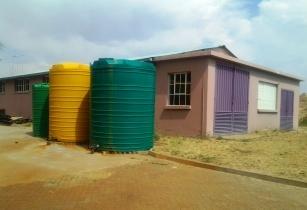In Namibia, water recycling has been undertaken since 1968 with direct water reclamation - at which time it became the first country in the world to practice such a methodology
Today, a company is working just outside Windhoek, continuing the nation's good record of water management - using a direct barrier process to separate recycling processes according to usage, to prevent cross-contamination from, for example, industrial usage and residential consumption. That company is Goreangab Operating Company.
Three dams surround Windhoek, contributing to meeting the capital's water footprint of about 80mn litres a day. Water management and provision is undertaken by the state-run utility, WaterNam. The company is one of three principal sources of reclaimed water supply, managed from its plant at Goreangab, in support of WaterNam's operations.
Goreangab Operating Company is backed by a tri-nation consortium, with French, German and Austrian backing - Veolia, Berlinwasser International, and VA Tech WABAG.
The Goreangab processes
Windhoek is a modern city, with limited water resources. Its water is judged by its quality, not its history. The plant at Goreangab transforms water into usable form by advanced technologies and a direct water reclamation process.
A system of multiple safety barriers is used before, after and during the Goreangab treatment process. The first barrier pre-treats water from industrial sources.
Pre-ozonation is the first barrier, providing disinfection and separating organic matter. Here, water is treated with ozone to break up organic matter into smaller parts. Ozone transforms impurities into harmless solid particles. Coagulation and flocculation at this stage results in dissolved air flotation (DAF), to remove floating sludge.
Remaining particles are removed by dual media filtration, before being again treated with ozone, to kill persistent bacteria. The next barrier further refines with biological active carbon filtration, to remove micropollutants. What follows is active carbon absorption, and then ultrafiltration.
After this stage, the water is very clean, and free of impurities. The water is then stabilised with caustic soda, to remove molecules that could damage pipelines.
The next stage involves quality monitoring processes using SCADA terminals. Only then is it delivered to WaterNam, to distribute for fresh purposes. Hence, Windhoek's water supply is amongst the purest in the world.
Two of the consortium's partners – Veolia and Berlinwasser International – will next extend their work at Goreangab by construction and operation of a facility at Williams, also outside Windhoek, to treat effluent, also outside through another private company.
READ MORE...
The corporate Finnish presence in South Africa
Finnish and African journalists to investigate sustainable projects and partnerships




























